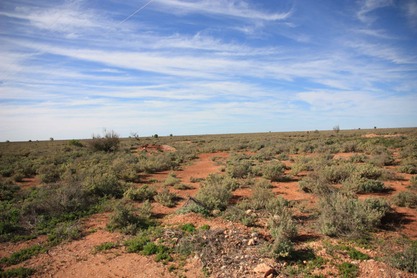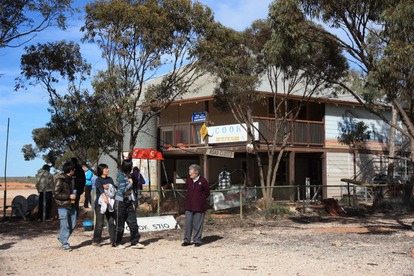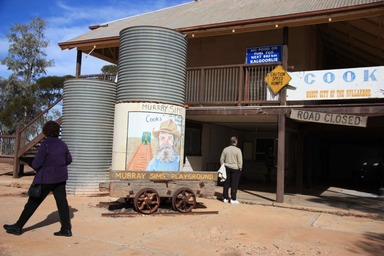 The other couple at the table, a farmer from the Blue Mountains and his born to shop for shoes missus were a mine of information since he was a Sandgroper by birth and had made the crossing several times by both road and rail. His better half wasn't at her best in the morning person role, but this was new ground to her so there were questions, remarks and bits of repartee flying across the table as we moved further onto a vast and seemingly unchanging landscape.
The other couple at the table, a farmer from the Blue Mountains and his born to shop for shoes missus were a mine of information since he was a Sandgroper by birth and had made the crossing several times by both road and rail. His better half wasn't at her best in the morning person role, but this was new ground to her so there were questions, remarks and bits of repartee flying across the table as we moved further onto a vast and seemingly unchanging landscape.
When I spotted something that could have been mountains I was informed that it was probably cloud and there was nothing out there to the south from the railway track to the highway, which lies a hundred kilometres away and beyond that to the Great Australian Bight. Nothing.
Not a hill, valley, river or anything that might deliver a drop of variation to a dead flat and even horizon. 
There was no variation on the northward side either, and as the PA announcement advised that we'd embarked on the world's longest stretch of straight line rail I meditated on the fact that on a full-circle vista there was nothing to break the absolute dead flatness of the Nullarbor skyline.
That lack of variation gave me plenty of time for catch-up scribbling, since there was absolutely nothing new that could be added in the way of interesting detail apart from a mercifully short half-hour stop at Cook.
You wouldn't want to be spending more than thirty minutes at Cook, which dates back to the construction of the line during the First World War.

Named after the sixth Prime Minister of Australia, Joseph Cook rather than navigator James, these days Cook is effectively a ghost town since the railways were privatised in 1997 and the new owners didn’t want to maintain a community that would increase overheads without contributing to revenue.
As a result the hospital and the school are closed, though there is still evidence, in the only substantial clump of trees on the Nullarbor, of attempts to create an oasis in the desert.
There are still refuelling facilities and overnight accommodation for train drivers, but the main purpose for the halt is to replenish the water supply for the Indian Pacific, originally done with water drawn from the Artesian aquifer but now, in the cause of greater profitability, with water brought in by train.